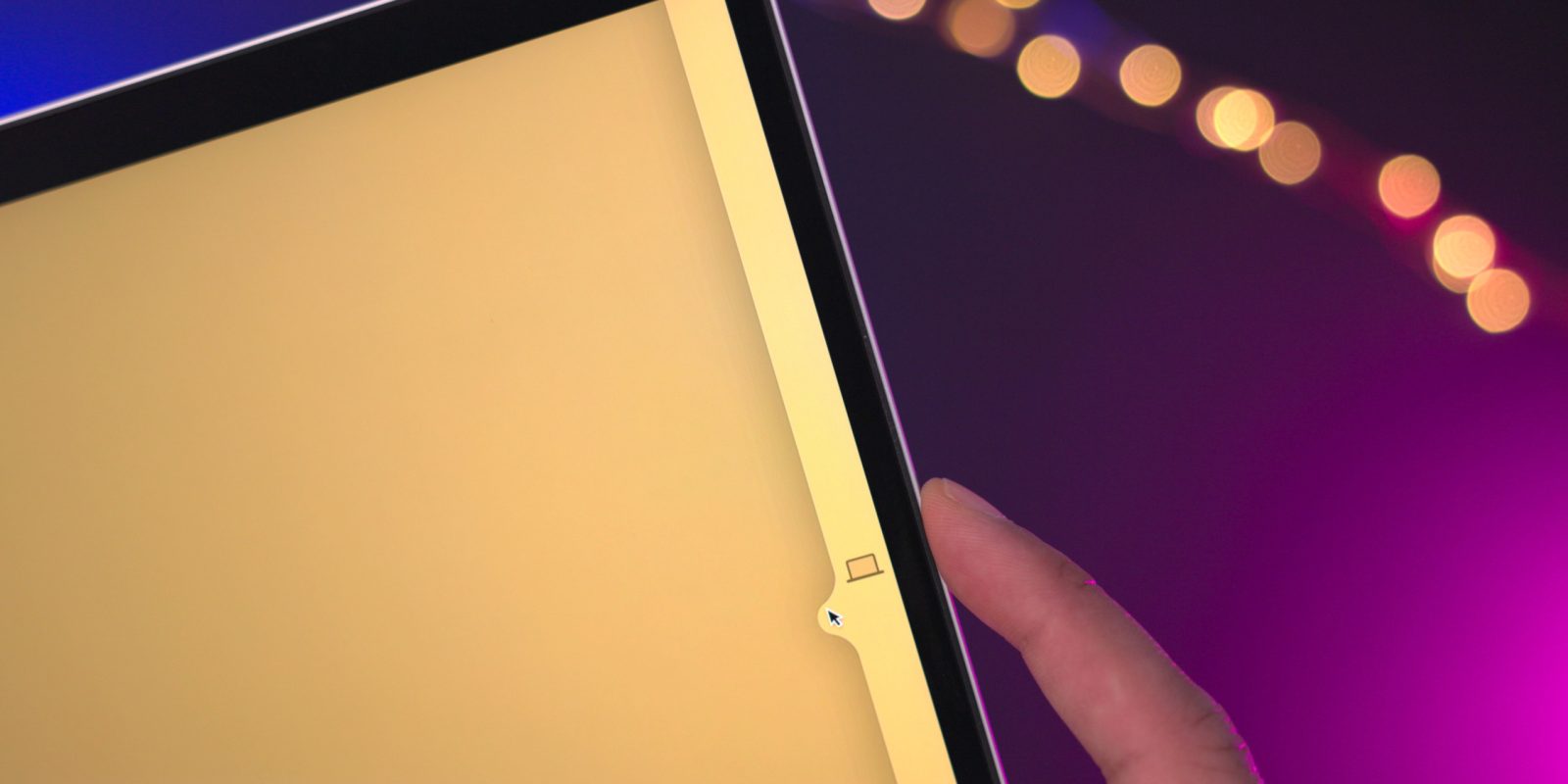
If you’re a Mac user who owns multiple Macs and/or iPads, then Universal Control, a handy utility that makes it easy to control multiple Apple devices from a single keyboard and mouse/trackpad, can greatly benefit your workspace. It’s one of the rare utilities that can both simplify and supercharge your desktop. Watch our hands-on video as we go in depth and discuss Universal Control tips and tricks, requirements, best practices, glitches, and more.
What is Universal Control?
Universal Control, a feature previewed back at WWDC 2021, allows users to control multiple Macs or iPads from a single input source. For example, you can initiate a Universal Control session from your MacBook Pro in order to control a nearby iPad using the same keyboard and trackpad on your laptop.
To use Universal Control, you’ll need at least one compatible Mac running the macOS 12.3 beta, along with another device — either a second Mac running the same beta, or an iPad running the iPadOS 15.4 beta. Outside of a possible glitch or bug, you cannot use Universal Control without a primary Mac serving as host.
Video: Universal Control tips and tricks, best practices, and more
Subscribe to 9to5mac on YouTube for more videos
What Universal Control is not…
Universal Control does not turn your iPad or extra Macs into external displays for your primary Mac. Instead, Universal Control allows you to control each separate device with the same mouse/trackpad and keyboard that you use on your main Mac. Think of Universal Control as sort of like a virtual KVM switch.
With this in mind, Universal Control does not allow you to move an application window from one device to another. For example, you cannot drag a Safari window, or any other application, from your Mac to your iPad and vice versa. Universal Control will, however, allow you to drag files between two devices. For instance, you can drag a file from your Mac’s desktop directly to the Files app running on an iPad, or drop a photo from Procreate on an iPad to a Keynote presentation on a Mac.
It is possible to use your iPad as an external display for your Mac via a different technology called Sidecar, which debuted alongside macOS Catalina. Sidecar allows you to use your iPad as an external display for your Mac in either wired or wireless mode.
And with macOS Monterey, Apple also introduced the ability to use a Mac as an AirPlay destination. This means that, via the macOS display preferences, you can use a separate Mac as an external display.
Note: As shown in the video embedded above, I was able to uncover a glitch that allows you to run Sidecar and Universal Control at the same time to a connected iPad, but that appears to be a bug and not a feature.
Universal Control compatible hardware
Macs
- MacBook Pro (2016 and later)
- MacBook (2016 and later)
- MacBook Air (2018 and later)
- iMac (2017 and later)
- iMac (5K Retina 27-inch, Late 2015)
- iMac Pro
- Mac mini (2018 and later)
- Mac Pro (2019)
Yes, even Intel Macs are compatible with Universal Control, if they’re updated to the latest macOS 12.3 beta.
iPads
- iPad Pro
- iPad Air (3rd generation and later)
- iPad (6th generation and later)
- iPad mini (5th generation and later)
Additional Universal Control requirements
To use Universal Control, all devices must be signed in to iCloud with the same Apple ID. For iPad users, Cursor and Keyboard (Beta) in Settings → General → must be enabled to use an iPad with Universal Control, but that setting should be enabled by default. Finally, each Mac or iPad should be placed within 30 feet of your main Mac. Of course, Wi-Fi and Bluetooth should be enabled, but that goes without saying.
How to invoke Universal Control
There are several ways to invoke Universal Control. The simplest way is move your Mac’s cursor to the edge of the display toward a nearby iPad or Mac, and the receiving device should automatically recognize it. You should see an animation appear on both displays to let you know that the nearby device is recognized. Continue to move your mouse to “push through” to the other machine, and the Universal Control connection will be established.

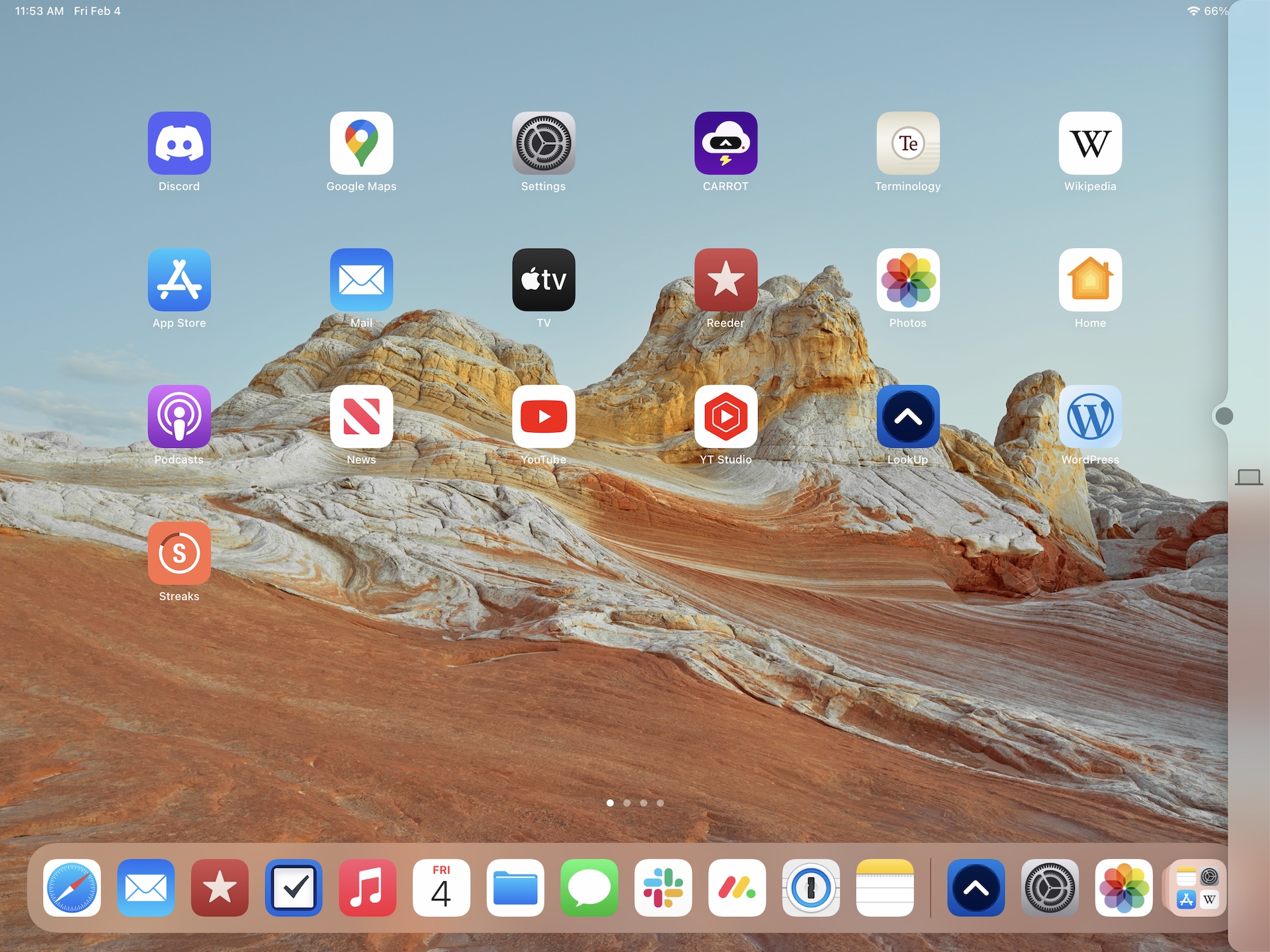

You can also invoke Universal Control directly from System Preferences → Displays. Once there, click the Add Display button in the bottom left-hand corner, and select the name of your eligible Mac or iPad under the Link Keyboard and Mouse heading.
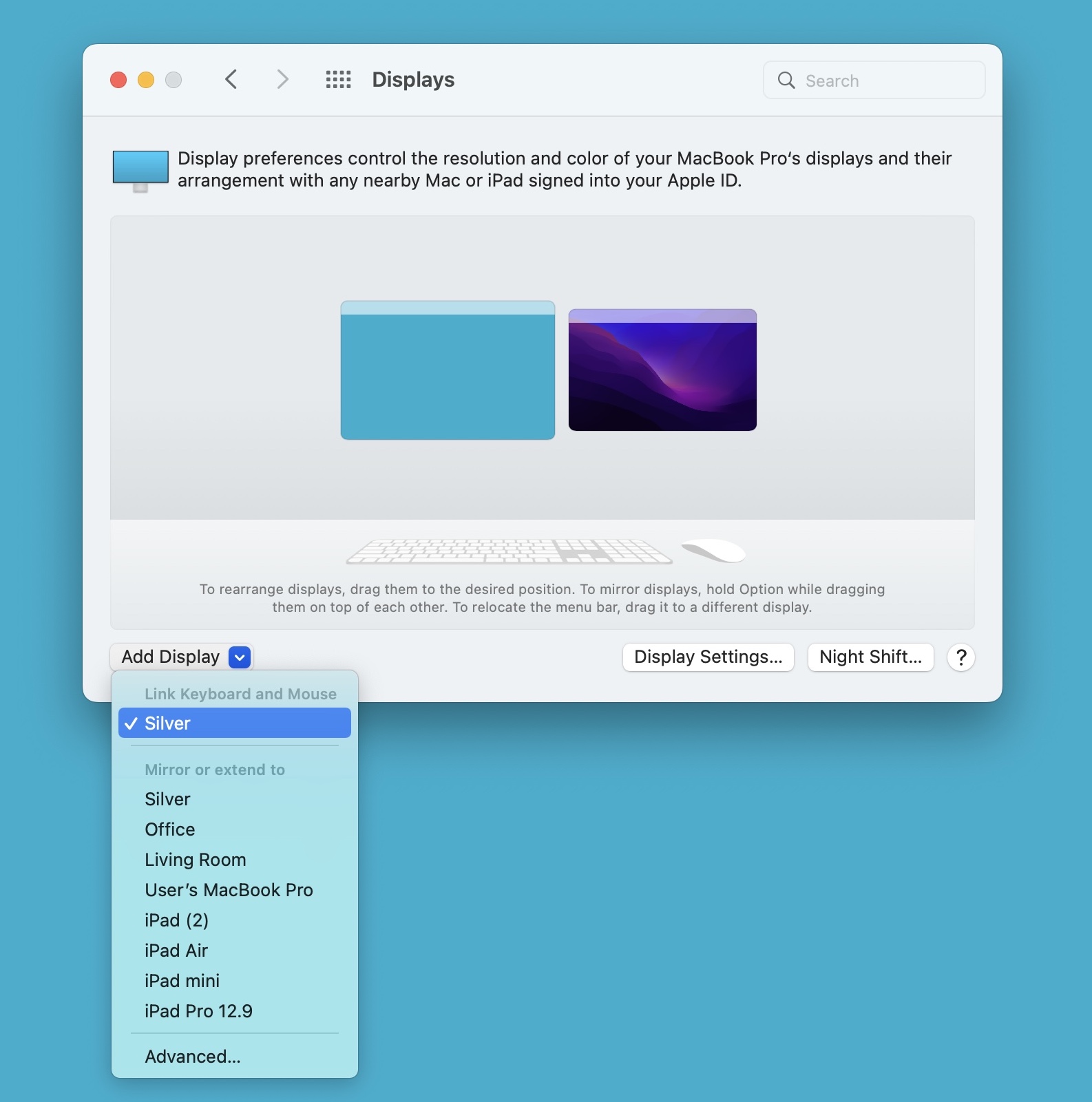
Once an instance of Universal Control is established, the Display icon will appear in the menu bar. When you click the icon you’ll see a ‘Link keyboard and mouse to:’ heading with the name of the Universal Control-eligible devices underneath. You can use this menu bar shortcut to quickly enable or disable Universal Control.
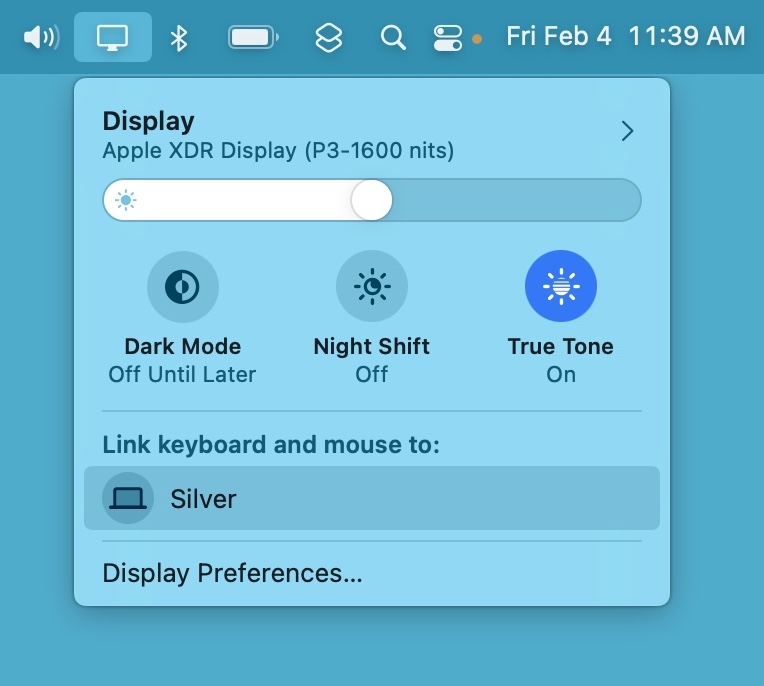
If you plan on regularly using Universal Control, I recommend going to System Preferences → Dock & Menu Bar → Display, and enabling the always option for Shortcuts in Menu Bar. That way, you always have a quick shortcut available for establishing Universal Control sessions between eligible devices.
Controlling Macs and iPads
Once Universal Control is placed into action, you can control additional Macs and iPads using your primary mouse/trackpad + keyboard combination. Simply move your cursor to the screen you wish to control, and you can use your primary input to control the action on screen. If you’re using an iPad with Universal Control, I highly recommend Twelve South’s HoverBar Duo. iPads can be used with Universal Control in either landscape or portrait mode, and HoverBar Duo supports both orientations.
You can also use the input mechanisms of other connected devices, such as an iPad Magic Keyboard, or another MacBook’s built-in trackpad and keyboard, to control all of the devices in a Universal Control chain. Just be aware that there are limitations to the amount of control you can have with some devices, such as the lack of full gesture support in macOS when utilizing the Magic Keyboard for iPad.
As demonstrated in Craig Federighi’s WWDC 2021 example footage, another big benefit of Universal Control is the ability to move files between multiple connected devices. For example, you can move a file from the Procreate on iPad directly to a Keynote presentation on a Mac. You can also move items from an iPad directly to the Mac. As noted, this applies to files only — you cannot move windows from one Mac to another, although you can always invoke Handoff to pick up where you left off on a session for supported apps.
Manually rearranging devices
Once a Universal Control session is established, you can visit System Preferences → Displays to rearrange displays and drag them to the desired position. This works similarly to configuring an external display connected directly to a Mac. You’ll notice that Mac computers represented on this screen feature a menu bar, while iPads do not. This allows you to quickly differentiate the different devices at a glance.

Universal Control advanced preferences
Hidden within macOS’s Display settings in System Preferences are three settings, currently in beta, directly related to Universal Control. To access these settings, click the Advanced button found in the bottom right-hand corner.

The first option, Allow your cursor and keyboard to move between any nearest Mac or iPad, lets your cursor and keyboard be used on any nearby Mac or iPad signed in to your iCloud account. This is the most basic Universal Control setting, and disabling it will completely disable Universal Control for that particular Mac.
The second option, Push through the edge of a display and connect to a nearby Mac or iPad, is the feature that allows you to use your cursor to connect to a nearby Mac or iPad simply by pushing against the edge of the display. With this feature disabled you can still initiate Universal Control via the Display panel in System Preferences, or via the Display menu bar shortcut.
Finally, there’s the option to Automatically recommence to any nearby Mac or iPad. This setting lets your Mac automatically reconnect to any nearby Mac or iPad that you were previously connected to. For example, if you put your Mac or iPad to sleep, or close your MacBook’s lid, the connection will be terminated, but will automatically reestablish once your device is awake and unlocked. The automatically recommence feature is disabled by default, but if you regularly use Universal Control, it might be worth enabling it.
Universal Control is not spatially aware… yet?
There are hints in macOS beta code that upcoming Macs may adopt ultra wideband technology. This technology, which is already present in iOS devices with the U1 chip, allows for spatial awareness for applications like AirTags finding.
Having ultra wideband technology in upcoming Macs could play a role in Universal Control in future versions of macOS. As of now, Universal Control is unaware of the spatial orientation of Macs and iPads. For example, when you place an iPad on the left side of your Mac’s display, and manually invoke Universal Control on the right side of your Mac’s display, the cursor will push through on the left side of your iPad, because it thinks that the iPad must be on the right side of your Mac based on your cursor movement. With ultra wideband support in Macs, and presumably iPads, the OS would have a much better idea of the spatial location of your devices, and thus respond more intelligently.
What happens when you remove a device?
When you remove a device that sits between your primary Mac and and another device, Universal Control should reconfigure on the fly to accommodate for the device’s removal, keeping the proper cursor flow in tact. You should see the arrangement of the displays update in System Preferences → Displays to properly show the correct configuration.
Just keep in mind that Universal Control is still in beta. I’ve encountered several bugs when removing devices, including a stuck cursor, among other weird glitches.
How many devices does Universal Control support?
It’s unclear how many total devices will be supported by Universal Control once it officially ships, and Apple simply says in its press materials that it works with “more than two devices,” which I perceive to mean three devices in all.

When trying to link the keyboard and mouse to a fourth device via the menu bar shortcut, you’re greeted with an error message asking you to disconnect one of your other devices first. Although it doesn’t throw out any error messages, the Add Display option found in System Preferences → Displays also seems to limit the total amount of devices to three, and wouldn’t allow me to add a fourth. With this in mind, and with Apple only demonstrating three connected devices in its press material, it’s possible that Universal Control will be limited to three connected devices at once — the connecting Mac + two additional Macs, or two additional iPads, or a Mac and an iPad.
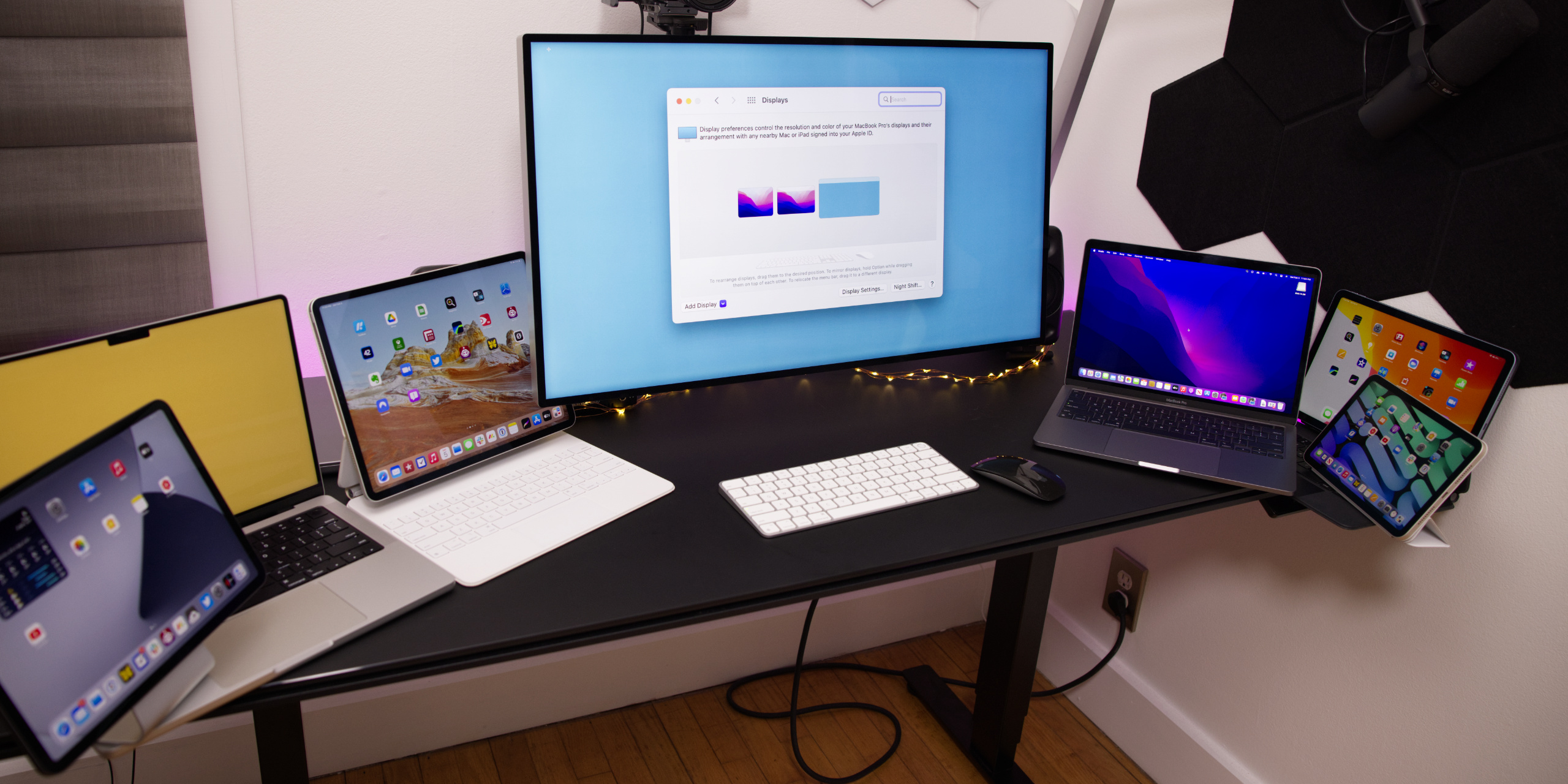
With all of that being said, I was able to use the push through method to link the keyboard and mouse from my main Mac across seven devices — four iPads and three Macs — before I ran out of additional devices to connect. Keep in mind that this may just be a bug; we’ll have to wait and see to find out.
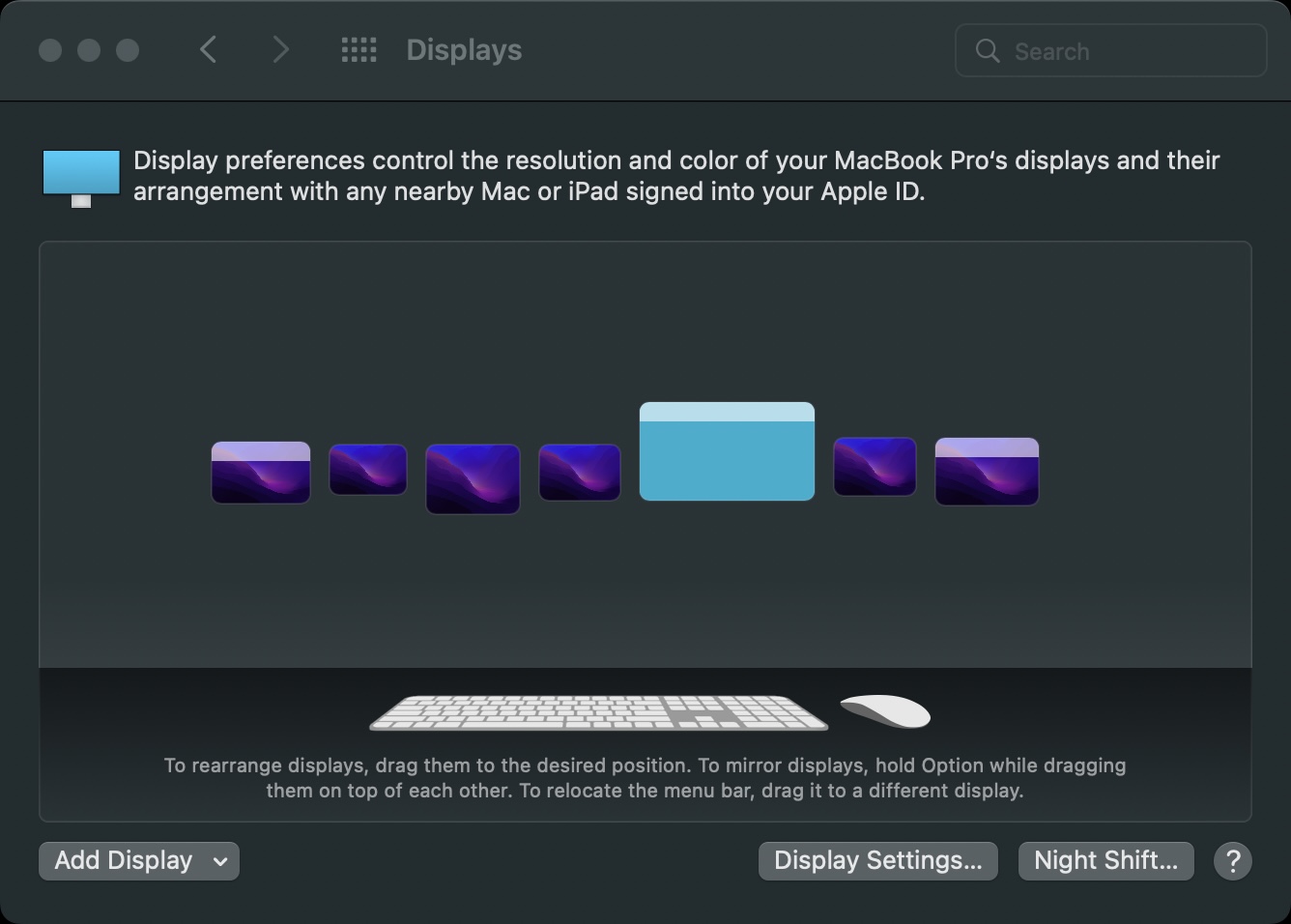
Since iPads serve as Universal Control termination points (it doesn’t appear that you can initiate a Universal Control connection from an iPad), I had to rearrange the orientation of the devices manually in System Preferences → Displays so that each new connection originated from a Mac.

My experience with Universal Control between just two or three devices has been great and relatively problem free, but I did start to notice some issues with lag and the occasional error when adding lots of additional devices. I think Universal Control is most practical when used with two or three devices at max.
Additionally, there are several known issues noted in Apple’s release details related to macOS 12.3 and Universal Control:
- Unexpected disconnections might occur on initial connection. Workaround: Sleep, then wake the device, and try again.
- Drag-and-drop scenarios might not work for some file types and apps.
- Some third-party keyboards and mice might encounter issues when using additional functionality, like scroll wheels.
9to5Mac’s Take?
Was Universal Control worth waiting for? After using it extensively for the past week, the answer is a resounding yes. Universal Control is a great way to control multiple devices using the same primary input method. As long as you are aware of its limitations, Universal Control does not disappoint, even in its current beta state.
What are your thoughts? Sound off down below in the comments.
FTC: We use income earning auto affiliate links. More.










Comments